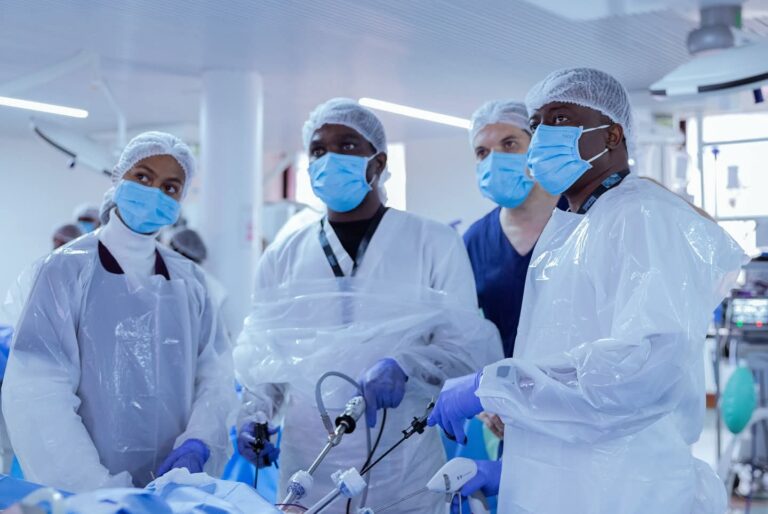For decades, major abdominal surgery meant one thing: a large, often painful incision. But the advent of laparoscopy has transformed the landscape, ushering in an era of “minimally invasive surgery” (MIS). This isn’t just about smaller scars; it’s a fundamentally different approach guided by unique principles and techniques, while still resting on the bedrock of surgical fundamentals. Let’s explore the fascinating world of laparoscopic surgery.
What is Laparoscopy?
Imagine performing complex abdominal surgery through tiny incisions (usually 0.5-1.5 cm), using long, slender instruments and viewing the inside of the body on a high-definition video monitor. That’s laparoscopy. A laparoscope – a thin telescope with a powerful light source and camera – is inserted through one incision, projecting magnified images onto screens. Specialized instruments are then introduced through other small ports.
The Core Principles Guiding the Laparoscopic Surgeon:
While the timeless principles of surgery (gentle handling, hemostasis, asepsis, etc.) remain paramount, laparoscopy demands unique applications and additional tenets:
-
The Primacy of Visualization:
-
Principle: Clear, magnified, and stable visualization is the absolute foundation. Without it, safe surgery is impossible.
-
Practice: Meticulous lens cleaning, anti-fog solutions, optimal camera positioning, maintaining a clear operative field (suction/irrigation), and perfect coordination with the camera operator are critical. High-definition and 3D systems enhance depth perception.
-
-
Creating & Maintaining the Working Space:
-
Principle: The abdominal cavity is a potential space; it needs to be expanded for instruments to maneuver and organs to be seen.
-
Practice: Pneumoperitoneum is established. Carbon dioxide (CO2) gas is insufflated into the abdomen to gently lift the abdominal wall away from the organs, creating a dome-like workspace. Precise pressure control is vital for patient safety and optimal visualization.
-
-
Remote Manipulation & Instrumentation:
-
Principle: Surgeons operate using long instruments that pivot at the abdominal wall entry point, creating a “fulcrum effect.” This requires different motor skills than open surgery.
-
Practice: Surgeons develop exceptional hand-eye coordination, translating 2D screen images into 3D movements. Instruments have specialized tips for grasping, cutting, dissecting, suturing, and sealing vessels (using energy devices like electrocautery or ultrasonic scalpels).
-
-
Meticulous Access (Port Placement):
-
Principle: Strategic placement of ports is crucial for optimal instrument triangulation (converging on the target area), avoiding internal/external collisions, and ergonomics.
-
Practice: Ports are placed based on the target organ, patient anatomy, and anticipated procedure steps. The first port (often for the camera) is usually placed using a “closed” (Veress needle) or “open” (Hasson technique) method to minimize risk.
-
-
Enhanced Atraumatic Technique:
-
Principle: Gentle tissue handling is even more critical in laparoscopy due to limited tactile feedback (“feel”) and the potential for amplified movements.
-
Practice: Surgeons rely heavily on visual cues for tissue tension. Fine, precise movements and specialized atraumatic graspers are essential to minimize tissue damage, which can be harder to perceive remotely.
-
-
Meticulous Hemostasis (Adapted):
-
Principle: Bleeding obscures the camera view rapidly in the confined space and can be harder to control remotely.
-
Practice: Proactive hemostasis is key. Energy devices (ligasure, harmonic scalpel) are extensively used for precise vessel sealing and cutting. Meticulous dissection and anticipating potential bleeders are vital. Suction must be readily available.
-
-
Ergonomics for the Team:
-
Principle: Unnatural surgeon posture, screen positioning, and instrument handling can lead to fatigue and strain, impacting performance.
-
Practice: Optimizing monitor height/distance, table height, comfortable surgeon stance, and proper instrument grip is essential for prolonged procedures. Team communication is crucial.
-
Why Choose Laparoscopy? Key Benefits:
-
Reduced Trauma: Smaller incisions mean less tissue damage.
-
Less Postoperative Pain: Significantly reduced compared to large open incisions.
-
Faster Recovery: Shorter hospital stays (often same-day or 1-2 days) and quicker return to normal activities/work.
-
Reduced Blood Loss: Magnification and precise instruments often lead to less bleeding.
-
Improved Cosmesis: Minimal scarring from small incisions.
-
Lower Risk of Wound Complications: Smaller wounds have lower rates of infection and hernia formation compared to large incisions.
-
Enhanced Visualization: Magnified view on screen can offer superior detail for certain procedures.
Not Without Challenges & Limitations:
-
Steep Learning Curve: Requires significant training to master the unique skills.
-
Reduced Tactile Feedback: Reliance on visual cues over “feel.”
-
Equipment Dependency & Cost: Requires specialized, often expensive equipment.
-
Technical Challenges: Can be difficult in patients with severe obesity, dense adhesions (scar tissue) from previous surgery, or complex anatomy.
-
Specific Risks: Potential for injuries related to trocar insertion or insufflation (e.g., vascular, bowel, or gas embolism injury, though rare with modern techniques).
-
Conversion to Open: Sometimes, unforeseen challenges necessitate converting to an open procedure for patient safety – this is considered prudent surgical judgment, not failure.
The Evolving Landscape:
Laparoscopy continues to advance:
-
Single-Incision Laparoscopic Surgery (SILS): Performing procedures through a single small umbilical incision.
-
Natural Orifice Transluminal Endoscopic Surgery (NOTES): Accessing the abdomen through natural openings (mouth, vagina, rectum) – still largely experimental.
-
Robotic-Assisted Laparoscopy: Enhanced dexterity, 3D vision, tremor filtration, and improved ergonomics for the surgeon (e.g., da Vinci system).
In Conclusion:
Laparoscopy represents a monumental shift in surgical practice. It’s not merely a different way to make an incision; it’s a distinct surgical discipline demanding specialized skills and adherence to its own set of amplified principles, all while upholding the core tenets of safe surgery. Driven by the pursuit of minimizing patient trauma while maximizing precision and recovery, laparoscopy has become the gold standard for countless abdominal procedures, from gallbladder removal and appendectomies to complex cancer resections and hernia repairs. It stands as a testament to surgical innovation, constantly evolving to improve patient care through smaller openings and greater vision.

